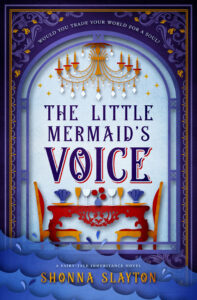This year for the Blogging from A to Z Challenge, I’m writing about the 1800s in celebration of Nellie Bly and Elizabeth Bisland’s race around the world in 1889, the subject of my new novel based on this adventure: Liz and Nellie.
***
Mass-produced fountain pens became popular in the 1880s after the problem with dripping had been solved. Louis Waterman, an insurance salesman invented one of these popular designs. He used the idea of air to help regulate the flow via capillary action.
in Nellie’s list of items she packed:
ink-stand, pens, pencils, and copy-paper
at the telegraph office in Italy she noted:
The only things in the room were two stationary desks. On the one lay a piece of blank paper before an ancient ink well and a much used pen.
I suspect that despite the modern advances in pens, Nellie Bly traveled the world with a dip pen for use with her ink well. She was not taking any chances on ink blotches ruining her newspaper articles.
My thoughts on fountain pens: I have a fountain pen from when I was interested in learning calligraphy. I’ve never enjoyed writing with it. Too scratchy.
My parents bought an antique letter-writing desk at an auction, and tucked inside was an old dip pen. It has always fascinated me. I’m sure my great aunt in England used to write her letters with a fountain pen. A ball-point doesn’t have the elegance of thin and thick lines like you can get with a fountain-pen nib. And of course, having a desk in school with a hole for an ink pot was always the sought-after desk. It was different, and it made you feel connected to a long line of students. Speaking of which, I followed a rabbit trail to this discussion of ink wells in those school desks and thought it was quite interesting: http://www.fountainpennetwork.com/forum/topic/103933-old-school-desks-ink-wells/





What an awesome theme! I ❤️❤️❤️ 19th century everything and you’re sharing some really cool facts! Thanks for posting on my blog with a link–I’m on thnot road at the moment and it made getting to your blog super easy!!! 🙂
That’s a fun post. I used to do calligraphy with a flexible dip pen. I don’t think I’ve ever tried a fountain pen. As they’re more rigid maybe they would work better for pen and ink drawings.
Dan Miller
http://www.impressionevergreen.com
I’ve been admiring the fountain pens at Barnes and Noble, but I’ve never taken the leap to buying one. As much as I romanticize the idea of sitting at a desk writing with a fountain pen, it seems like it’s more of an art than a practicality, and possibly more nuisance than it’s worth to work with. But it would certainly be an inspiring desk adornment to put me in the writing mood!
I received a fountain pen as a university graduation gift. I found it beautiful and smooth to write with. I couldn’t really get dip pens to work very well, as I found them all scritchy. Ball points seem to leave a funny little groove that is okay for writing, but when one is doing something artistic, it compresses the paper too much. A tiny little felt-tip is nice.